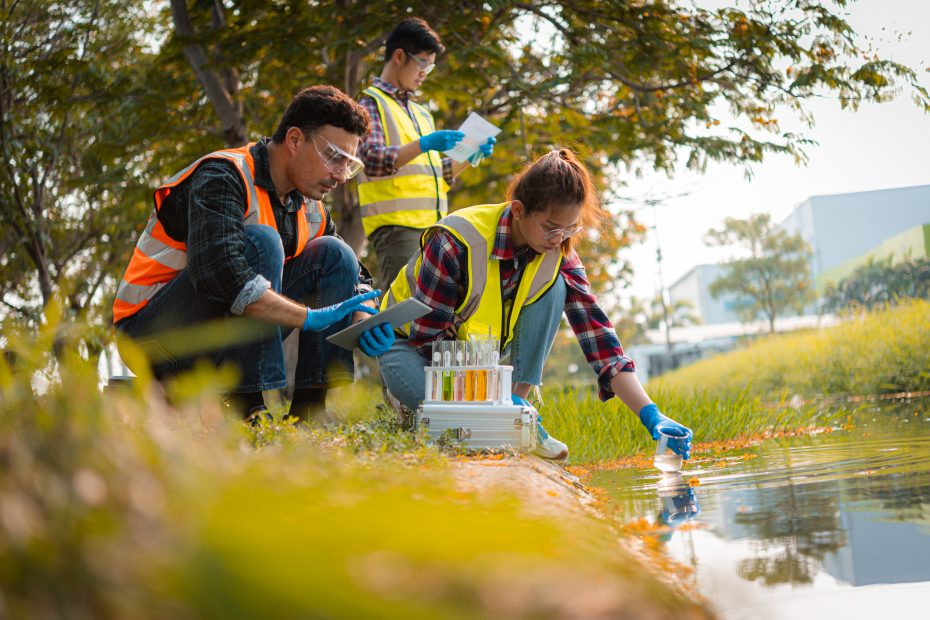Let’s start with some honesty. I majored in history in college and learned many facts, dates and bits of information. I’d be lying if I said I now remember any significant fraction of them. But it's the themes, insights and arguments that I can’t seem to forget. I focused on environmental history, which gave me a deep appreciation for the magnitude of humanity’s impact on the environment, and the oft-ignored yet massive effect of these environmental changes on ourselves. From the Dust Bowl to depletion of fisheries, there’s no doubt that we have transformed the environment — and have paid the price for that.
I’m reminded of this when reading Jan Semenza and Albert Ko’s New England Journal of Medicine article on climate change’s impact on waterborne disease. The authors deliver a clear and well-supported thesis: that climate change threatens to exacerbate the spread and impact of waterborne disease by increasing the survival and dispersion of pathogens, expanding pathogen exposure and disrupting health care infrastructure.
The authors lay groundwork by explaining how climate change, driven by fossil fuel use, has elevated average global temperatures. This increases evaporation which increases atmospheric water vapor, causing a rise in “very wet events” and severe droughts, they write.
This well-documented, increased burden of extreme weather events due to climate change creates a “heads I win, tails you lose” dynamic in regard to waterborne disease. On one hand, heavy precipitation events are a major risk factor for waterborne disease outbreaks. Floods increase runoff, potentially overloading sewers and causing release of pathogen-laden wastewater, the authors warn. Significant rainfall also can move pathogen-laden sediments from farms into water sources. Imagine a big storm that drops a couple of inches of rain onto a dairy farm without adequate drainage infrastructure. The runoff from the rain can carry manure into nearby streams and rivers, which could contaminate downstream water sources. But very wet events aren’t the only risk; very dry ones are also a threat. Droughts deplete water sources, concentrating the pathogens contained within them. These elevated pathogen concentrations can exceed the capabilities of water treatment facilities to disinfect and remove them.
Semenza and Ko also outline a host of pathogens, from Legionella to Vibrio, which have increased survival, virulence and/or growth in warmer water. While some such as rotavirus prefer cooler waters, this isn’t cause for celebration. The article notes that “a majority of studies have shown a positive association between temperature and diarrhea caused by bacterial pathogens.”
The potential burden of these waterborne diseases exacerbates existing inequities, the authors note. Nations and communities with limited sewer infrastructure will be disproportionately affected. Further, these areas often lack access to public health and health care infrastructure for treatment. But even in well-resourced areas, waterborne disease risks persist. In October 2023, here in Baltimore, low levels of cryptosporidium were found in Druid Lake reservoir, triggering advisories for immunocompromised individuals to disinfect their tap water. The culprit: The reservoir was uncovered, and likely some animal feces entered the water. It doesn’t require much imagination, especially against a backdrop of intensifying climate change and storms, to visualize a scenario where this happens again.
This isn’t all doom and gloom. Bolstering sewer infrastructure, expanding monitoring like the Center for Disease Control and Prevention’s waterborne disease surveillance system and increasing access to treatments could all help address this issue. Limiting climate change is also crucial. But the crux of the matter is that complacency is unacceptable. The cat is out of the bag. The climate has changed, is changing and will continue to precipitate many downstream consequences. The question that remains is, what are we going to do about it?
Links to Works Cited and Referenced
- https://www.nejm.org/doi/full/10.1056/NEJMra2300794
- https://climate.nasa.gov/extreme-weather/
- https://www.wbaltv.com/article/baltimore-water-parasite-cryptosporidium-reservoirs-uncovered/45416490
- https://www.cdc.gov/healthywater/surveillance/tracking-systems.html
- https://health2016.globalchange.gov/water-related-illness
Related Content
- Facing the Reality of the Climate Crisis with a Simulation from MIT Scientists
- Global Threats to Public Health: Dr. Peter Hotez on Climate Change, Conflicts, Poverty and Antiscience
- Should We All Go Vegan?
Want to read more from the Johns Hopkins School of Medicine? Subscribe to the Biomedical Odyssey blog and receive new posts directly in your inbox.

